Double boilers may not be the flashiest item in a cookware set, but any seasoned chef or home cook who’s tried making a delicate sauce or melting chocolate for a fancy dessert knows how valuable they are.
Before retailers add these trusty tools to their product lineup, it is better to understand what to consider when stocking good double boilers. So, this article will break down everything that matters, from material choices to marketing tactics.
Table of Contents
What are double boilers? And how popular are they?
5 Things worth considering when building a double boiler inventory
1. Picking the right material
2. Sizing up the options
3. Design details that matter
4. Durability
5. Pricing strategies
Marketing the benefits: Tips to help create better strategies
Keeping an eye on trends
Wrapping up
What are double boilers? And how popular are they?
A double boiler is essentially two pans: a larger pot holding simmering water and a smaller pot or insert resting above the water’s surface. This setup provides gentle, consistent indirect heat through steam, so customers won’t have to worry about scorching the bottom of the bowl when melting chocolate or making custard.
If they’re tired of improvising with a DIY glass bowl perched over a pot of water, they will see the value in a dedicated double boiler. But are double boilers even popular enough to sell? Google data shows that interest in them grew recently by 70% (90,500) in January 2025 from 49,500 in 2024, proving that they are gaining more attention.
Retail tip: In your product descriptions or in-store demos, highlight how a double boiler protects delicate ingredients from direct heat. Many shoppers don’t realize that’s the big advantage!
5 things worth considering when building a double boiler inventory
1. Picking the right material
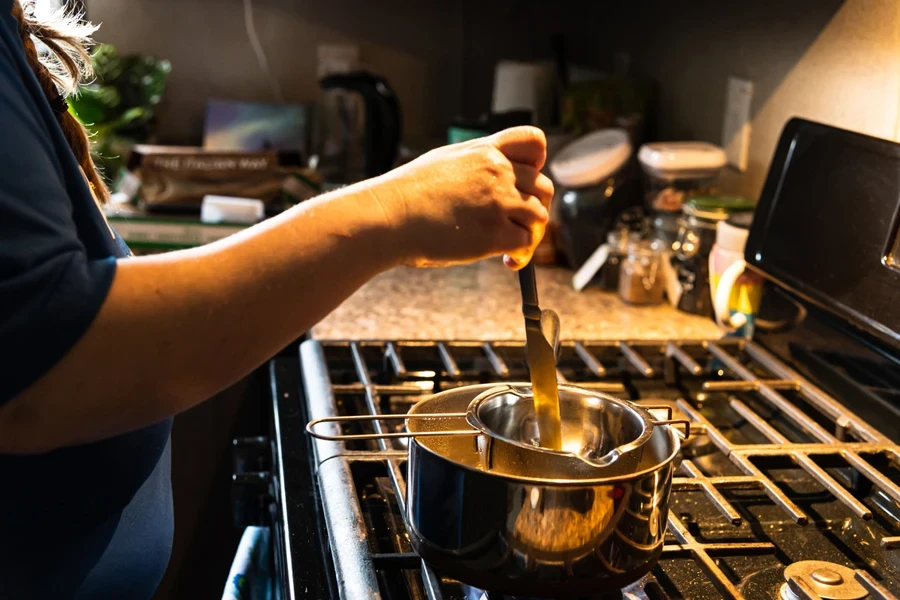
When stocking up on double boilers, retailers will notice a few popular materials: stainless steel, aluminum, copper, and sometimes enamel-coated steel or cast iron. Each has its pros and cons:
- Stainless steel is reliable, durable, easy to clean, and often dishwasher-safe. It’s also non-reactive, meaning it won’t affect the flavor of the food.
- Aluminum heats up quickly and is lightweight, which can be a plus for many shoppers. However, uncoated aluminum may discolor if consumers don’t handle it properly.
- Copper or copper-clad is famous for its superior heat conduction, but it can be more expensive and requires more care to keep it looking new.
- Enamel-coated can be visually striking and offer even heating, but they tend to be heavier (especially if they’re enamel-coated cast iron).
Pro tip: Consider carrying at least one stainless steel model (usually the crowd favorite) and one option for shoppers who appreciate premium or unique cookware (like copper or enamel).
2. Sizing up the options
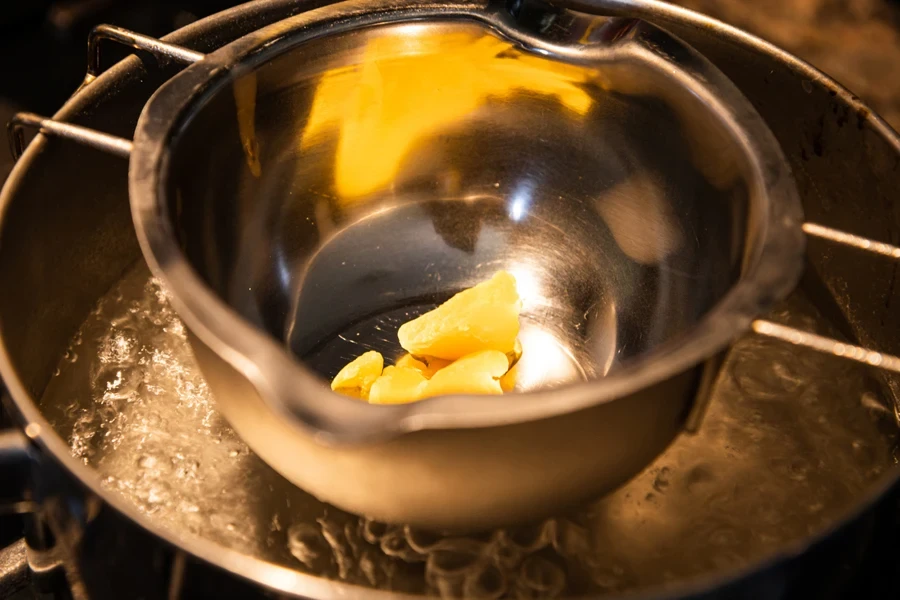
Double boilers come in different sizes, typically from 1 quart to 5 or more quarts. The size retailers choose will depend on their target customer base. Here’s a closer look:
- Small (1–2 quarts) is perfect for melting butter or chocolate, making small-batch sauces, or cooking for one or two.
- The medium (2–4 quarts) size is the most versatile, handling everything from small family meals to moderate dessert recipes.
- Large (5+ quarts) is better for consumers who cook in large batches or prepare large holiday meals.
Retail tip: If inventory space is tight and you can’t offer every size, choose a mid-range option that appeals to the widest range of home cooks.
3. Design details that matter
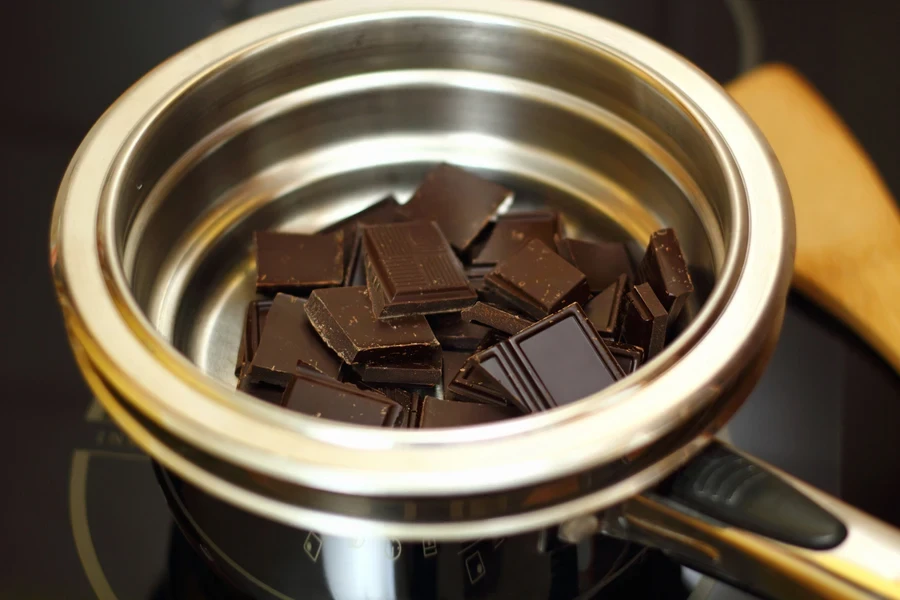
Sometimes, the little things can seal the deal when customers choose between cookware options. Handles that stay cool to the touch or easy-pour rims can be big selling points. If an insert can double as a saucepan, that’s even better because shoppers love multipurpose items.
However, don’t overlook the power of good packaging. On the box or your product display, point out standout features (like a drip-free spout or extra-sturdy riveted handles). Consumers often make quick decisions based on those eye-catching details.
4. Durability
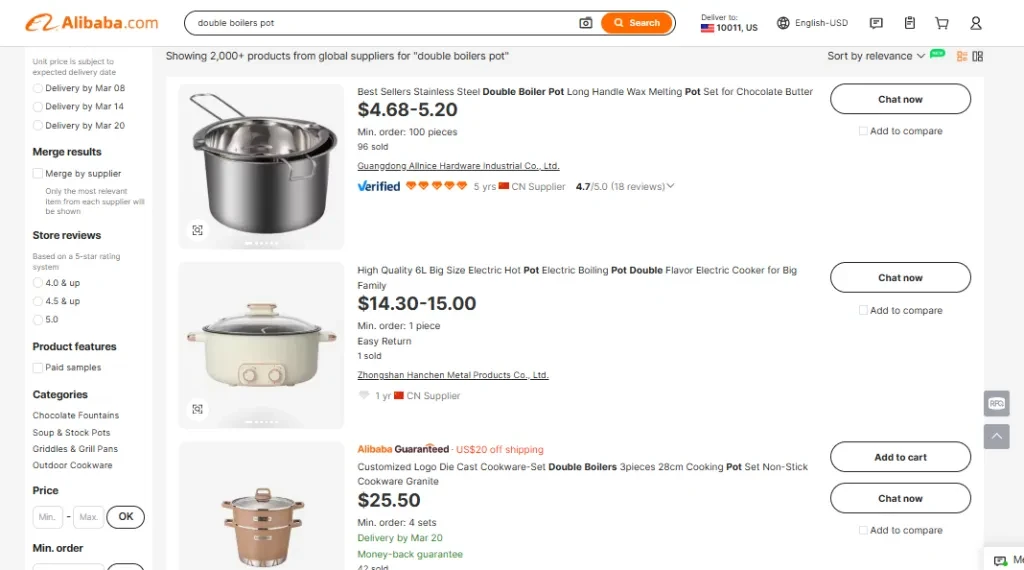
Most people invest in cookware, so they want something that won’t warp or rust after a few uses. Stainless steel double boilers, especially with solid construction and secure handles, hold up well. Furthermore, any manufacturer offering a good warranty will likely score extra points with consumers.
5. Pricing strategies
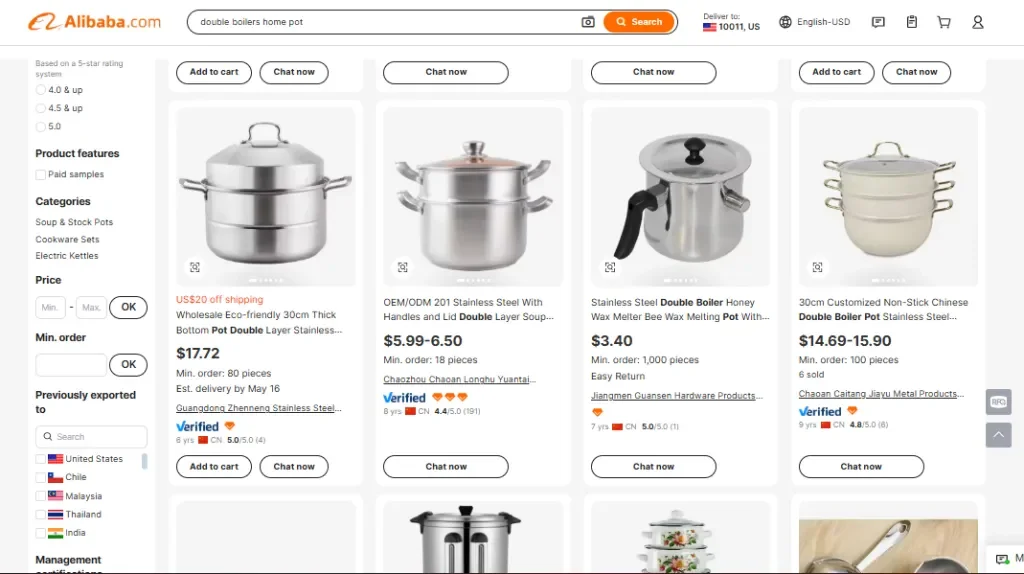
Not everyone wants to shell out top dollar for a double boiler, but some customers might jump at the chance to buy a premium piece of cookware that lasts for years. Consider offering a range of prices to cover different budgets:
- Budget-friendly (under $30): This price range should cover basic models with thinner metals and a straightforward design.
- Mid-range ($30–$60) is a good price range for solid construction, reliable materials, and design perks.
- Premium ($60+) should only cover high-quality stainless steel or copper options, often with extra-thick bases and high-end finishes.
Retail tip: Don’t just list the prices—give shoppers a clear breakdown of the differences. Explain why one model costs more—maybe it’s triple-ply steel or comes from a manufacturer known for lasting quality.
Marketing the benefits: Tips to help create better strategies
So, how do retailers convince someone they need a double boiler? By focusing on the everyday uses. They’re perfect for delicate sauces, cheese fondue, chocolate dips, custards, and other foods that can easily burn in direct contact with heat. Here are some marketing angles to take for different consumers:
- Show beginner cooks how easy it is to melt chocolate or make a quick hollandaise sauce without scorching.
- Health-conscious consumers: Emphasize gentle cooking techniques that preserve nutrients (especially in sauces or custards).
- Holiday hosts and entertainers: A double boiler is indispensable for making fancy desserts and creamy side dishes during big gatherings.
Pro tip: If you can offer cooking demos (in-store or via online videos), that’s a great way to showcase the product’s versatility. People love seeing a hands-on demonstration, which helps them imagine the product in their kitchen.
Keeping an eye on trends
While double boilers have remained relatively unchanged, cookware materials and design trends have evolved. Some customers are looking for eco-friendly or sustainably sourced products, and Copper’s Classic, Instagram-worthy styles might draw others in.
If retailers monitor trends, they can fine-tune their selection accordingly. For example, if they see a growing interest in sustainable cookware or a particular brand is gaining popularity on social media, they might consider introducing a few of those models.
Wrapping up
A double boiler is a specialized kitchen tool that simplifies home cooking and baking. By stocking a range of sizes and materials and highlighting its everyday benefits, retailers will attract the attention of budding home cooks and seasoned pros.
Don’t forget that small design details and strong warranties can sway the decision for buyers on the fence. Ultimately, the goal is to help consumers feel confident about their purchases. If they walk out of the store (or check out online) with a double boiler they’ll use and love, there’s a good chance they’ll come back for more cookware in the future.




